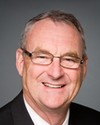Thank you to the witnesses for being here today.
I really appreciate the leadership you have shown on this file and moving forward. I think there have been some great gains and successes. We see many of the resource communities embracing aboriginal training and using them in the workforce there, and I think it's been very positive.
Madam Crowder and I were on the Standing Committee on Aboriginal Affairs and Northern Development. There was a report put forward to the House on post-secondary education for aboriginal students and looking at recommendations to help the outcomes. What was found during the time we were putting the report together was that, as far as the outcomes on post-secondary education were concerned, the same percentage of aboriginal students who got to grade 12 went on to post-secondary education as non-aboriginal students. The outcomes to grade 12 were the problem.
In putting together that report, one of the things discussed was the opportunity of trying to connect students at a younger age—those in high school, junior high school, or middle school—with the opportunities in the mining, oil and gas sector, or whatever, and that economic opportunity is around the more remote rural communities. I was wondering if anything has been done to try to make that connection at an earlier age, especially with male students because they respond better to getting their hands dirty and doing mechanics or electrical, and that type of thing.

